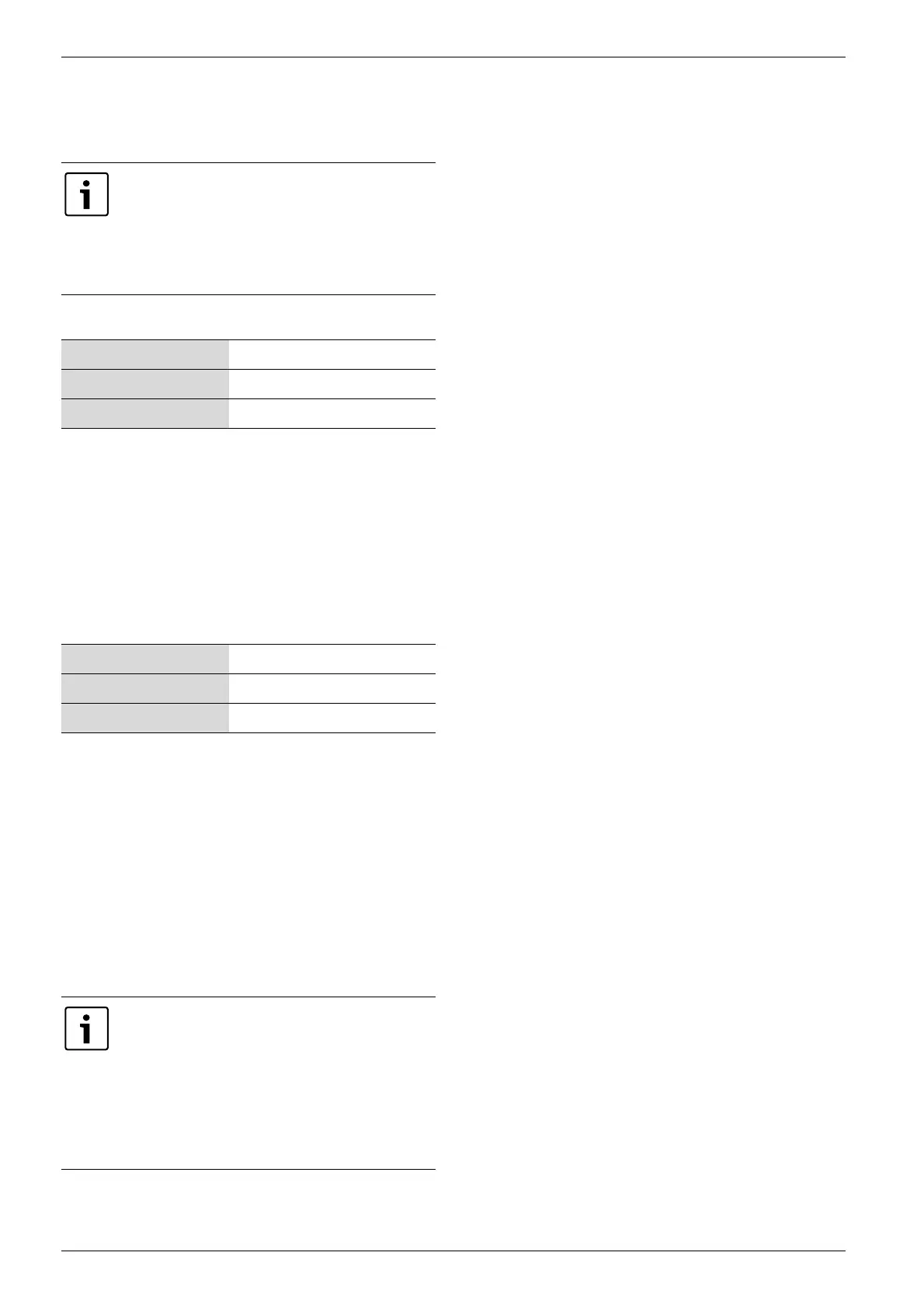Settings
6 720 643 409 (2010/03)
64
B Set the run time that is indicated on the mixing valve
and indicate value in number of seconds.
>>> Mixing valve fully closed
B Set how many K below the maximum permitted flow
temperature T1 the mixing valve is to be fully closed.
The maximum flow temperature is different
depending on the type of heating system (radiator or
underfloor). With an underfloor system, the mixing
valve should be fully closed at 45 °C-2K=43 °C (with
factory settings).
>>> Mixing valve start closing
B Set how many K below the value for fully closed
mixing valve the closure of the mixing valve should
begin. The result is 43 °C-2K=41 °C (with the factory
settings for underfloor heating).
15.1.1 Set point value
The heating circuit's set point value is the temperature
of the flow that the heat pump attempts to maintain.
Sometimes, the measured actual value fluctuates a bit
upward and downward depending on changes in the
outdoor temperature or a large hot water demand.
The set point value is normally based on:
• Current curve value (the flow temperature at the
current outdoor temperature according to the
applicable heat curve).
• Current curve influence through:
– Room sensor
– Holiday
– Active program
– External control
Set point value calculation
The set point value for the heating circuit is the current
curve value adjusted with active curve influence, if any
such exists.
Priority order for curve influence is:
• External control
• Active program
• Holiday
• Room sensor
Only one of these can be active. How big the influence
should be and when to exercise it is set in the respective
function.
Fixed set point value
A fixed set point value (not curve-based) applies in the
event of:
• External set point value. The set point value is
determined according to input signal 0-10V where 1V
is 10 °C and 10V is 80 °C (0V triggers an alarm).
Set point value limitation
The calculated set point value is always checked against
the permitted temperature limits.
The applicable set point value T1 for Circuit 1 and the
measured actual value for T1 are used to activate and
deactivate the heat demand.
The following applies to Circuit 2, 3...: When the actual
value for the mixed circuit's T1 is low in relation to the
set point value, more heating water is shunted into the
circuit so as to maintain the set point value.
If the flow line temperature has been below the set point
value for a certain period of time, there is heat demand
and the compressor produces heat before there is a too
significant temperature reduction indoors. This happens
until the flow line temperature is a couple of degrees
higher than the set point value. (Or because Maximum
operating time for heating at hot water demand has
passed.)
Heating demand is not active during summer operation.
If there is no time indication on the mixing
valve, run it manually (Æ Chapter 15.7) and
measure how long it takes to go from fully
closed to a fully open mixing valve (the
mixing valve stops sounding and the
endposition switch switches off).
Factory setting 2.0K
Lowest value 1.0K
Highest value 10.0K
Tab. 80 Mixing valve fully closed
Factory setting 2.0K
Lowest value 1.0K
Highest value 10.0K
Tab. 81 Start closing mixing valve
The set point value specified by the
customer/installer is most often the room
temperature, which is recalculated by the
control unit into a corresponding flow
temperature set point value. Under normal
conditions, 1 K ( °C) in room temperature
corresponds to approx. 3 K ( °C) in flow
temperature.
